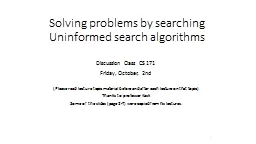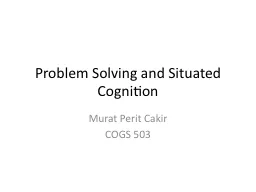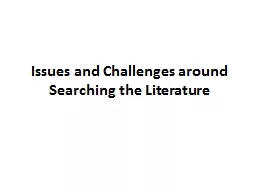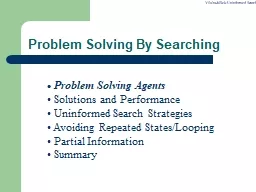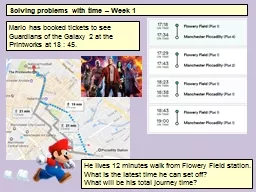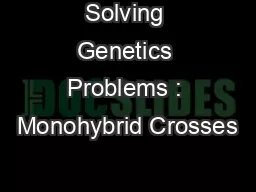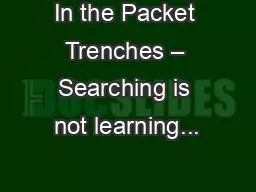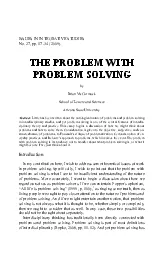PPT-Solving problems by searching
Author : classyshadow | Published Date : 2020-06-18
Uninformed search algorithms Discussion Class CS 171 Friday October 2nd Please read lecture topic material before and after each lecture on that topic Thanks to
Presentation Embed Code
Download Presentation
Download Presentation The PPT/PDF document "Solving problems by searching" is the property of its rightful owner. Permission is granted to download and print the materials on this website for personal, non-commercial use only, and to display it on your personal computer provided you do not modify the materials and that you retain all copyright notices contained in the materials. By downloading content from our website, you accept the terms of this agreement.
Solving problems by searching: Transcript
Download Rules Of Document
"Solving problems by searching"The content belongs to its owner. You may download and print it for personal use, without modification, and keep all copyright notices. By downloading, you agree to these terms.
Related Documents

